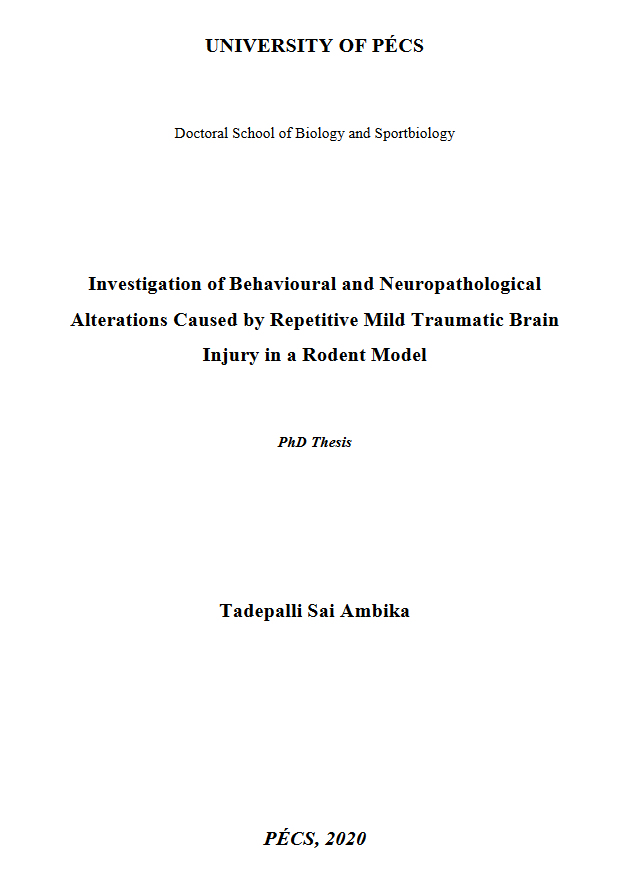Investigation of Behavioural and Neuropathological Alterations Caused by Repetitive Mild Traumatic Brain Injury in a Rodent Model
Abstract
Traumatic brain injury is a very heterogeneous disease and occurs when an external physical force impacts the head, either causing the brain to move within the intact skull or damaging the brain by fracturing the skull (McGinn and Povlishock 2016). Based on the level of consciousness and responsiveness following injury, TBI has been classified into mild, moderate and severe injuries, using Glasgow Coma Scale (GCS) score (Sternbach 2000). Cognitive outcome following head-on collision TBI very much resemble the memory deficits reported in patients following frontal lobe damage, e.g., memory loss, impulsivity and emotional instability (Vakil 2005). However, as stated earlier, concussions or mild TBI (mTBI) are much more common and more frequently observed. Concussions are a frequent occurrence in contact sports such as football, soccer, rugby and hockey. Two primary complications of concussion are the postconcussion syndrome and the second impact syndrome (Cantu 1998; Rabadi and Jordan 2001). Increasing evidence has suggested that athletes may sustain multiple concussions throughout their active career, thus potentially exacerbating their cognitive functions. Understanding the long-term sequelae of concussion in humans has been challenging for investigators due to the range of severity of injury, heterogeneous nature of outcome, and feasibility of extended follow-up. In the recent decade, there has been a growing interest to investigate the neuropsychological and pathological effects of repetitive concussion in experimental animal models.Most TBI studies have been primarily conducted in rodents, as they offer the ability to investigate molecular and neurophysiological changes from minutes to weeks following the injury. For example, adult mice who received 3 mild impacts with an inter-injury interval of 24h exhibited significant deficits in learning in the Morris water maze (MWM) test 1 week post-injury, compared to mice who received a single hit (Nichols et al. 2016).Extensive axonal damage caused by repetitive mTBI has also been reported elsewhere (McAteer et al. 2016; Mouzon et al. 2012; Ojo et al. 2016). Heightened tauopathyand glial activation markers such as glial fibrillary acidic protein (GFAP) have also been observed to occur following repetitive mTBI(rmTBI)(Rubenstein et al. 2019; Shitaka et al. 2011).To sum up, most of the currently available studies have only investigated acute and sub-acute effects (at 1 week to 2 weeks postinjury) of TBI and research has paid little or no attention to long-lasting functional consequences of head injuries.

